- JST Home
- /
- Strategic Basic Research Programs
- /
 PRESTO
PRESTO- /
- project/
- Creation of Life Science Basis by Using Quantum Technology/
- [Quantum Bio] Year Started : 2017
[Quantum Bio] Year Started : 2017
Hitoshi Ishiwata
Analysis on functionality and interaction of biomolecules using delta dope NV center
Researcher
Hitoshi Ishiwata
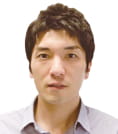
PRESTO Researcher
Japan Science and Technology Agency
Outline
NV center in diamond emerged as a breakthrough material for quantum sensing. Its unique spin-dependent fluorescence combined with microwave coherent manipulation constitute a material platform for a quantum magnetometer. This atomic size sensor could be formed within nm from observation target allowing NMR measurement from nanoscale sample volume. However, its use for biological applications such as molecular dynamics analysis is limited by its sensitivity. In this research, I will work on technology development for biological measurements as well as NV center creation to increase sensitivity of NV center for realization of molecular dynamics analysis.
Takuro Ideguchi
Ultra-sensitive label-free imaging
Researcher
Takuro Ideguchi

Associate Professor
Institute for Photon Science and Technology
The University of Tokyo
Outline
Fluorescence imaging technique is widely used for visualizing chemical ingredients in biological cells or tissues. However, the bulky fluorescent probes often disturb the biological system. Therefore, it is inherently not possible to acquire images that reflect sample’s real condition. Label-free microscopes can solve the problem, but currently available techniques are not able to detect low-density molecules due to the lack of sensitivity. Here, I will develop an ultra-sensitive label-free microscope that can detects low-density molecules with high specificity.
Yuujiro Etou
Minimally invasive deep multiphoton spectroscopy using broadband squeezed light
Researcher
Yuujiro Etou
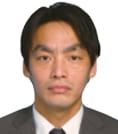
Associate Professor
Graduate School of Engineering
Kyoto University
Outline
I aim to develop a bioimaging that break the performance limit of existing microscopic techniques by using quantum light sources. I will realize a minimally invasive deep multiphoton microscope by combining the squeezed light source and the technique of nonlinear optical microscope. In addition, I will open up a possibility to study the observation of coherent quantum phenomena using quantum light source.
Hirotaka Kitou
Explorations of Unknown Biological Electron Transfers and Their Roles in Biological Functions Using Quantum Simulation Techniques
Researcher
Hirotaka Kitou
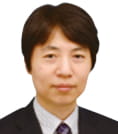
PRESTO Researcher
Japan Science and Technology Agency
Outline
Unknown electron-transfer reactions in proteins have a possibility to be involved in the famous but little-understood biological functions, such as the protection from oxidative damage, magnetoreception, olfaction, etc. This project explores the unknown biological electron transfers using the advanced quantum simulation techniques, which combines electronic structure calculations, reaction rate theories, and charge dynamics simulations. I will clarify the detailed microscopic mechanism of the biological functions mentioned above at the quantum mechanical level through the explorations of the unknown electron transfers in protein.
Kenji Shimazoe
Development of Multi-Photon Time-Space Correlated Imaging Method
Researcher
Kenji Shimazoe
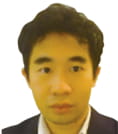
Associate Professor
School of Engineering
The University of Tokyo
Outline
PET and SPECT are important nuclear medicine imaging methods, however, it is not possible to realize multi-nuclide imaging or molecular interaction imaging. In this study a new nuclear medicine imaging method (MPECT Multi Photon Emission CT) is proposed and investigated based on the time-space correlation of multi-photon cascade gamma-rays to extract the local information in a body for achieving the molecular interaction imaging.
Mutsuo Nuriya
Imaging chemical signal transduction in the brain using multiphoton microscopy
Researcher
Mutsuo Nuriya
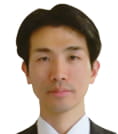
Associate Professor
School of Medicine
Keio University
Outline
While playing key roles in cognitive functions, chemical transmitter have not been successfully visualized yet in the brain. This study aims at realizing this by taking the full advantages of multiphoton microscopy techniques. Results obtained from this study are expected to contribute to better understandings of physiology and pathophysiology of the brain, and the widely applicable novel technique developed in this project should greatly facilitate applications of quantum technologies to the whole fields of life sciences.
Yuu Hirano
High-resolution structure analysis of quantum phenomena in protein molecules
Researcher
Yuu Hirano
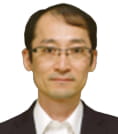
Principal Researcher
Institute for Quantum Life Science
National Institutes for Quantum and Radiological Science and Technology
Outline
Hydrogen atoms and valence electrons are directly involved in various chemical reactions of protein molecules. Because hydrogens or electrons move through an energy barrier, quantum tunneling is thought to contribute in these reactions. Information about hydrogen atoms and valence electrons can be obtained by the complementary use of neutron and X-ray diffraction. The aim of this work is to elucidate structural bases of tunneling effects in the chemical reactions of proteins by using the high-resolution structure information.
Makiko Fujii
Imaging Mass Spectrometry of Cell Tissue using Reactive Quantum Beam
Researcher
Makiko Fujii

Lecturer
Graduate School of Environment and Information Sciences
Yokohama National University
Outline
The novel quantum beam with highly reactive projectiles will be developed for enhancing the ionization probability of bio-molecules. The imaging mass spectrometric apparatus with the reactive quantum beam will be developed for acquiring mass images with both high sensitivity and high spatial resolution. The objective of this study is to realize the visualization of cell interior and the chemical reaction occur in the individual cell tissue.
Yoshihiro Maruyama
Quantum Information Theory of Life and Cognition: Categorical Formulations and their Applications
Researcher
Yoshihiro Maruyama
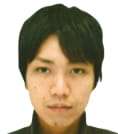
Lecturer
Research School of Computer Science
The Australian National University
Outline
The central tenet of this project is to structurally integrate the logic of quantum physics/information with the logic of life/cognition by virtue of categorical foundations, and thereby to elucidate the higher structural laws that physics (matter) and life/cognitive sciences (living mind) have in common (notwithstanding that they have unfortunately been separated since the rise of Cartesian dualism). The fundamental links thus exposed would allow us to effectively transport quantum knowledge into the realm of life/cognition, yielding fundamental insights into the structural nature of life/cognition whilst boosting applications of quantum physics/information to life/cognitive sciences.
Tomoyasu Manni
Plane-selection optical imaging by magnetically responsive optical probes
Researcher
Tomoyasu Manni
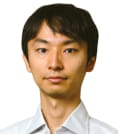
Assistant Professor
Department of Chemistry
University of Connecticut
Outline
Optical probes whose molecular emission can be controlled by weak external magnetic fields may enable the development of new optical imaging technologies in life science. Magnetic control of molecular emission can be achieved by incorporating a magnetically sensitive intermediate species such as radical pairs into a photophysical pathway. This project aims to establish the design principles of a single molecular system that exhibits magnetic field effects on charge-transfer emission, and to achieve a proof-of-principle for a new imaging method.
Eiichi Mizohata
Dynamic structure-function relationship of metalloenzyme visualized by time-resolved XFEL crystallography
Researcher
Eiichi Mizohata

Associate Professor
Graduate School of Engineering
Osaka University
Outline
Using X-ray free electron laser, I aim to completely elucidate the dynamic structure-function relationship of a metalloenzyme with high precision through visualizing the whole picture of the three-dimensional structural change, which occurs from moment to moment during catalytic reaction, under damage-free and room-temperature conditions. In the course of this research, I will develop a switch system of time-resolved serial femtosecond crystallography as a new analytical foundation in enzyme chemistry and create a new life science that gives innovative knowledge.
Hiroshi Watanabe
The development and the applications of the seamless analysis of protein dynamics with incorporated quantum chemical effect
Researcher
Hiroshi Watanabe
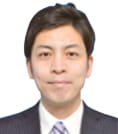
Project Lecturer
Graduate School of Science and Technology
Keio University
Outline
Water molecules entering and leaving the proteins are closely related to the protein functions. Quantum chemical effects play a major pole in dynamics of such water molecules. However, the present molecular simulations cannot incorporate the quantum chemical effect of the water molecules in dynamics analysis. To challenge the limitation, in the present study, we plan to establish new simulation framework, and demonstrate its performance applying it to protein analyses













